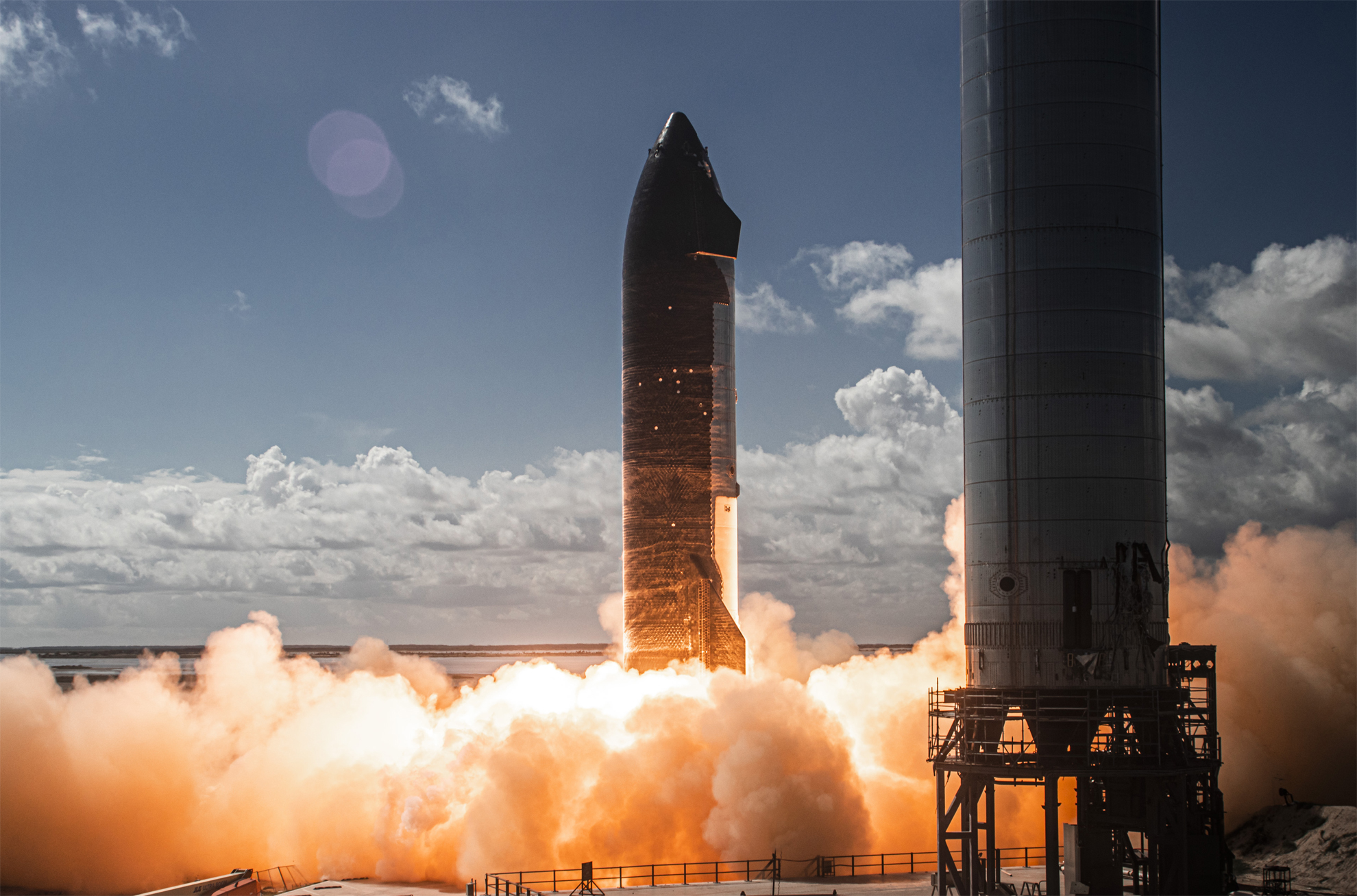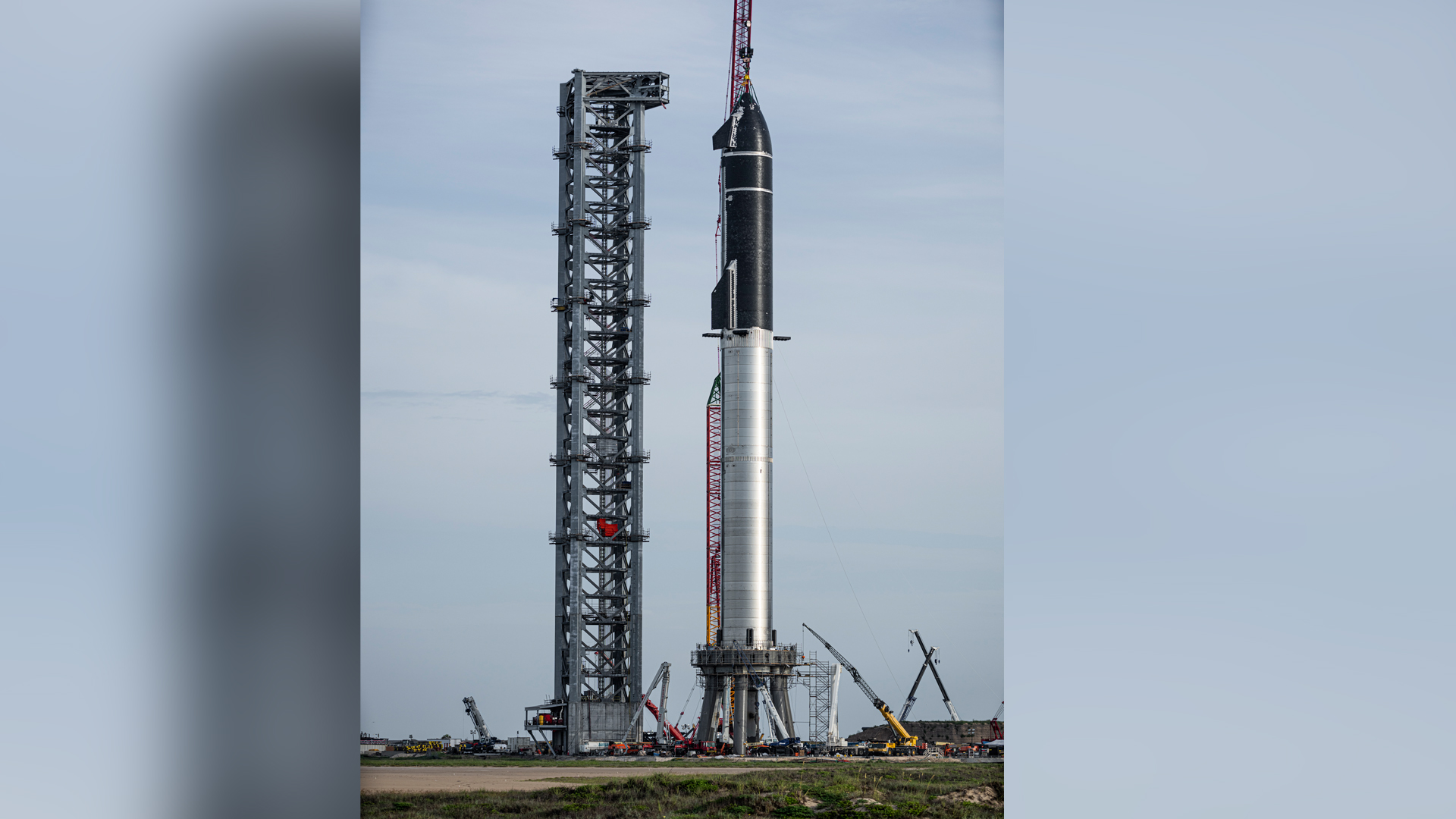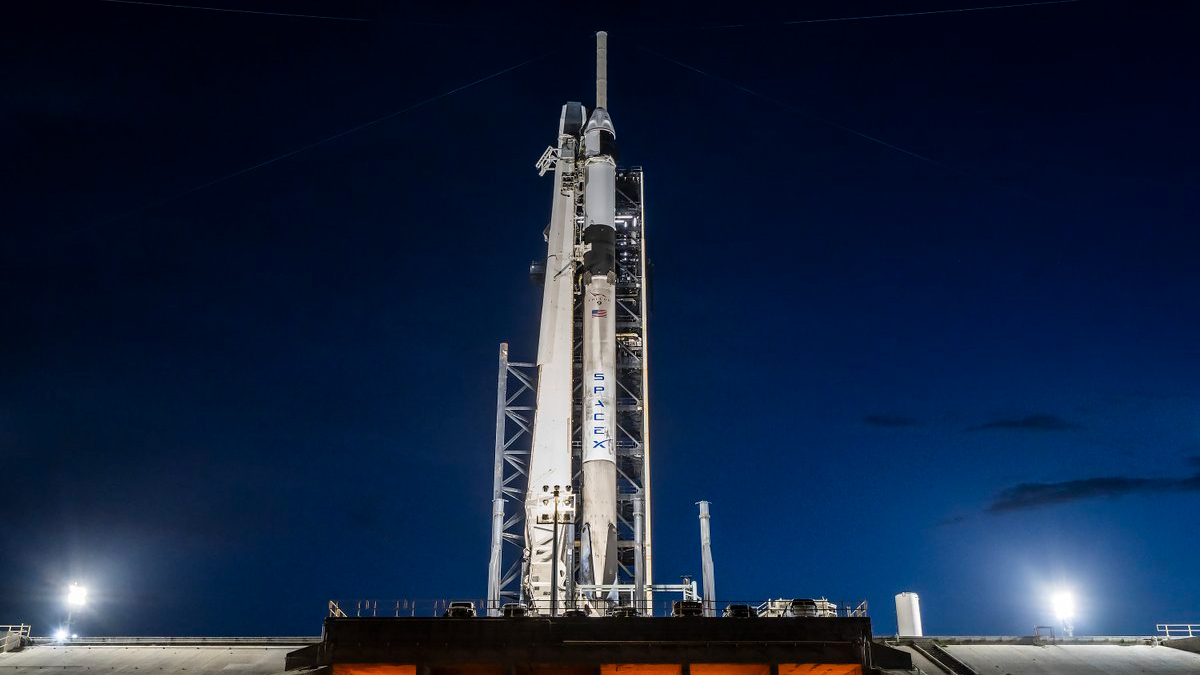
SpaceX will try to fly a Starship to orbit for the first time early next year, if all goes according to plan.
The company is targeting January or February for its first Starship orbital launch attempt, SpaceX founder and CEO Elon Musk said Wednesday (Nov. 17). And that initial landmark leap will ideally be followed by a number of others shortly thereafter.
"We intend to do, hopefully, a dozen [Starship] launches next year," Musk said during a livestreamed presentation at the joint fall meeting of the Space Studies Board and Board on Physics and Astronomy, both of which are part of the U.S. National Academies of Sciences, Engineering, and Medicine. "Maybe more."
World's tallest rocket: SpaceX stacks Starship atop massive booster for 1st time
Starship consists of two elements, both of which are designed to be fully and rapidly reusable: a huge first-stage booster known as Super Heavy and a 165-foot-tall (50 meters) spacecraft called Starship. Both are powered by SpaceX's next-generation Raptor engine, six in the case of Starship and 29 for Super Heavy (at the moment at least; the booster will eventually sport 33 Raptors, Musk said).
SpaceX is developing this ambitious transportation system to get people and payloads to the moon, Mars and other distant destinations.
"Ultimately, Starship is designed to be a generalized transport mechanism for the greater solar system," Musk said.
Breaking space news, the latest updates on rocket launches, skywatching events and more!
SpaceX has launched a handful of test flights with Starship prototypes from its "Starbase" facility, which is near the South Texas village of Boca Chica. But those hops reached a maximum altitude of about 6 miles (10 kilometers) and featured vehicles with just three engines.

The upcoming orbital test flight will involve a Starship prototype called SN20, which has the full complement of six Raptors, and a 29-engine Super Heavy known as Booster 4. The duo will lift off from Starbase. Booster 4 will splash down shortly after liftoff in the Gulf of Mexico, but SN20 will make one loop around Earth and come down in the Pacific Ocean, near the Hawaiian island of Kauai.
SpaceX could not launch the mission right now even if it wanted to, because the U.S. Federal Aviation Administration (FAA) is conducting an environmental assessment of the orbital launch activities at Starbase. That review is expected to wrap up by Dec. 31, FAA officials announced recently, and SpaceX intends to get off the ground not long after.
But we shouldn't expect a picture-perfect flight, Musk said.
"There's a lot of risk associated with this first launch," he said. "So I would not say that it is likely to be successful, but I think we'll make a lot of progress."
That envisioned progress will lead to roughly a dozen launches over the course of the year, which should prove out the Starship system enough for it to begin operational missions in 2023, Musk said.
SpaceX already has some customers for Starship. For example, Japanese billionaire Yusaku Maezawa booked the vehicle for a flight around the moon, with a liftoff targeted for 2023. And earlier this year, NASA selected Starship as the initial human landing system for its Artemis program, which aims to establish a sustainable human presence on and around the moon by the end of the decade.
The first crewed Artemis moon landing will take place no earlier than 2025, NASA chief Bill Nelson recently said. (The agency had officially been shooting for 2024.)
Over the long haul, SpaceX intends to use Starship to help colonize Mars, thereby making humanity a multiplanet species — a long-held and oft-stated ambition of Musk's. Starship could even help humanity planet-hop from Mars to the dwarf planet Ceres — the largest object in the asteroid belt — to the moons of Jupiter, as long as we set up some propellant depots along the way, Musk said.
And, in this grander vision, it wouldn't just be a few Starship craft making such journeys.
"I think, in order for life to become multiplanetary, we'll need maybe 1,000 ships or something like that," Musk said.
Scaling up production to meet that envisioned demand — especially for the engines, given that 33 will power each Super Heavy — will be a big challenge. But SpaceX is already gearing up to meet it, Musk said, noting that the company is now "building the factory to make lots of Starships and make lots of engines in parallel." That factory is in McGregor, Texas, where SpaceX does its engine testing.
Mike Wall is the author of "Out There" (Grand Central Publishing, 2018; illustrated by Karl Tate), a book about the search for alien life. Follow him on Twitter @michaeldwall. Follow us on Twitter @Spacedotcom or on Facebook.
Join our Space Forums to keep talking space on the latest missions, night sky and more! And if you have a news tip, correction or comment, let us know at: community@space.com.

Michael Wall is a Senior Space Writer with Space.com and joined the team in 2010. He primarily covers exoplanets, spaceflight and military space, but has been known to dabble in the space art beat. His book about the search for alien life, "Out There," was published on Nov. 13, 2018. Before becoming a science writer, Michael worked as a herpetologist and wildlife biologist. He has a Ph.D. in evolutionary biology from the University of Sydney, Australia, a bachelor's degree from the University of Arizona, and a graduate certificate in science writing from the University of California, Santa Cruz. To find out what his latest project is, you can follow Michael on Twitter.
